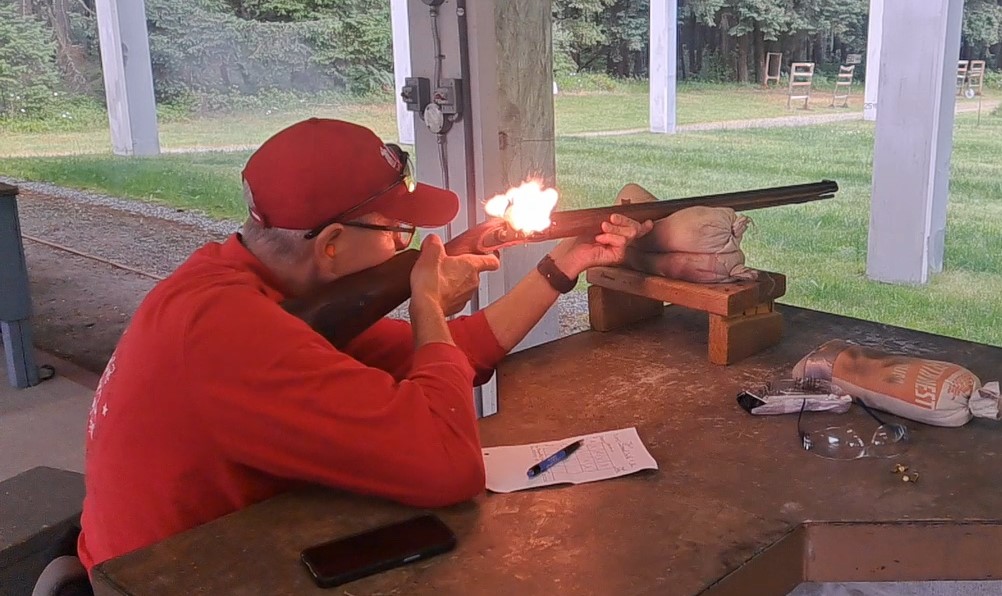
Disabled veterans recently enjoyed some blackpowder shooting in Washington state, thanks to a gropup of muzzleloaders.
By Mike Nesbitt | Contributing Editor
Once in a while an opportunity is seen where we can repay our veterans just a little bit. One of those opportunities recently took place at the Paul Bunyan Sportsmen’s Club, home of the Paul Bunyan Plainsmen, where some disabled veterans were invited to take part in a match with muzzleloading rifles. That invitation was certainly answered in a very positive way.
The idea was a good one, for sure, but it was dependent on some volunteer help from other clubs or at least from other shooters. The reason for that was because the disabled veterans would need to have the muzzleloading rifles loaded for them and, as anticipated, several of those veterans had never fired a muzzleloading rifle previously.
Two members of the Paul Bunyan Plainsmen ramrodded this event; Jim Haeckel and Bill Sick. They were running the match. Then Steve Cole, of the Washington State Muzzleloading Association, was the liaison with the Paralyzed Veterans of America and the invitation was sent out. Those veterans, with varying degrees of disabilities, some of them were in wheelchairs, were all capable of holding and aiming a rifle and to help along those lines, all shooting by the veterans was done from benchrests.
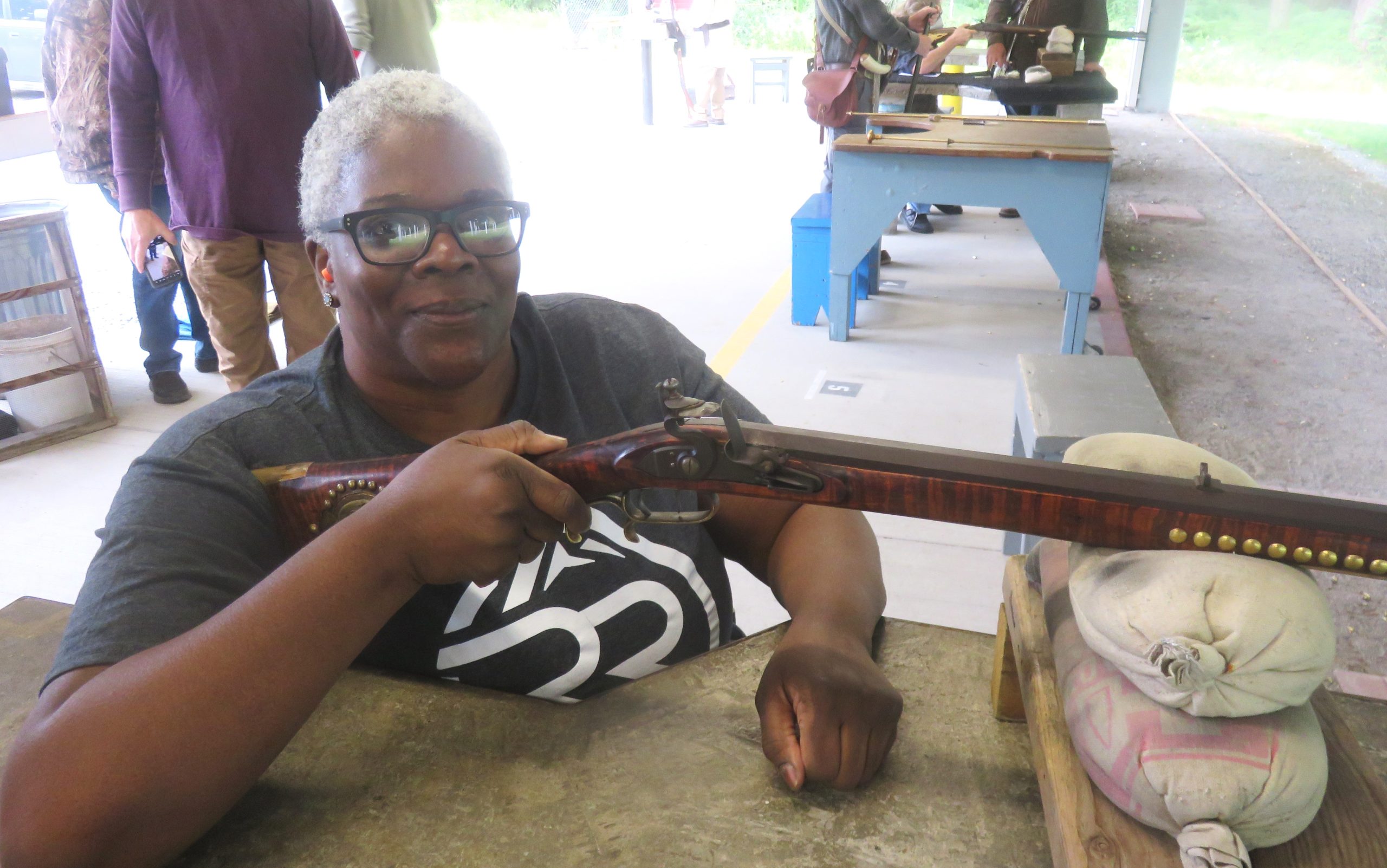
Tracy is about to shoot a flintlock for her first time.
Jim and Bill designed and ran the match. The targets were all gongs which are certainly more fun than paper targets. One reason for that is because they’ll move with the hits and the shooters can see right away if they hit or missed. Of course, the whole idea was for the veterans, the guests of the event, to have a very good time while doing some shooting.
Four gongs were selected and set up. The first target was a fair sized “moon” which was set at 25 yards. Next was a standing ground hog which was also out at 25 yards. That was followed by a medium sized gong in the shape of a buffalo and that was out at 35 yards. Finally, the last target was a bull elk, the largest gong, which was at 45 yards. While those gongs were described in order, they were not necessarily shot at in order because the shooters might start at whichever was the available target. And the “course of fire” included four shots at each target, for a total of sixteen shots per shooter.

In general, this all went very well, and the veteran guests certainly had a good time. In addition to the shooting, the knife & ‘hawk practice blocks got quite a bit of attention, with tomahawks provided. Let me add that the shooters kept track of their hits and misses on score cards and while those scores were being added-up and arranged, the Plainsmen put on a fine lunch with barbequed “brats” for hot dogs and hamburgers. Guests and volunteers all ate a very hearty meal as part of the good doin’s.
The rifle I took for those guests to try shooting was my .40 caliber percussion Leman, the rifle I call “Lil’ Rascal” with the 38-inch barrel. That’s a good one to get started with because the .40 has a very slight recoil (although one shooter didn’t think so) as well as a rather quiet bark. One little thing I did before allowing any of the guests to try a shot with it was to back-off the set trigger adjustment screw. I like my set triggers to be very, very light and that is simply too light for someone who isn’t used to or expecting it. Even backed-off, I had those shooters try clicking the triggers, with the hammer all the way down on the nipple, before doing any actual shooting. And the load being used was my typical loading of just 45 grains of GOEX FFFg powder under the patched .390” ball. In a nutshell, that makes it a comfortable rifle to shoot.
Before the shooting got started, one of the guests named Jason Robertson, brought some gifts for the volunteers. Jason has a forge, which he calls Lawless Forge, and he made knife blanks for each of the volunteers. The blanks are well shaped knife blades which do require some bevel and finish work plus getting handles but they should make into fine knives. One interesting thing about these knife blanks is that they were forged and hammered out of horseshoes. You can still see some of the nail holes in the area left for the handles. That’s an interesting idea and Jason told me that once finished and sharpened, the knives will hold an edge that you can shave with.
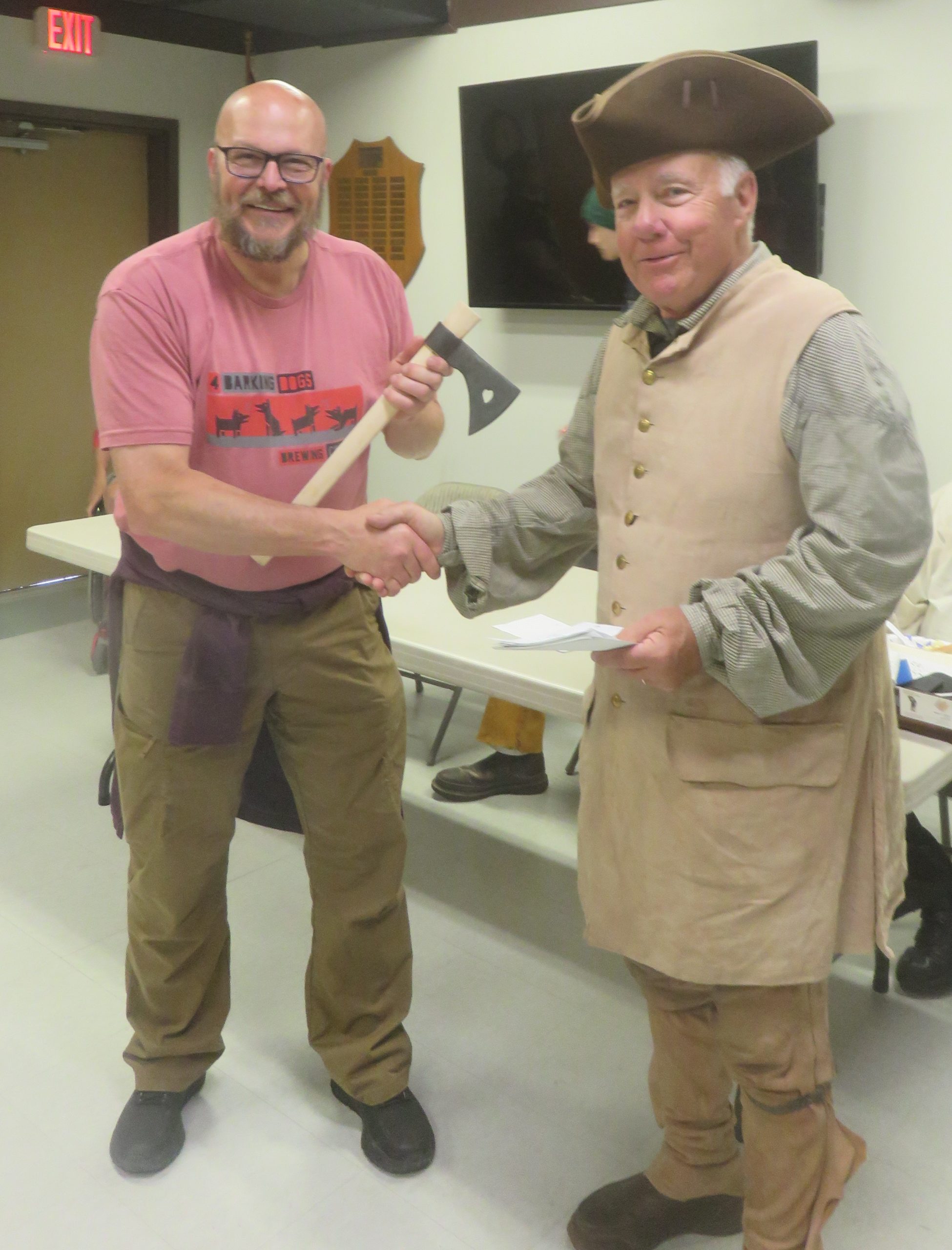
When the shooting got started, it seemed like it was in a quiet way. The rifles still sounded normal, but the shooters were somewhat subdued and quiet. I guess that is to be expected because none of them had muzzleloading experience before taking those first shots and they didn’t know what to expect. So, those first shots were “ice breakers” in a way and as the shooting continued cheers for good hits could be heard from the shooters and from the volunteers as well. That was when the guests really started to enjoy the shooting, when they realized how much fun they were having.
It was very interesting to see or hear how the guests related to the rifles they were using. Jerry Mayo enjoyed telling me about one of the guests, whose name I didn’t get, looked at the rifle Jerry brought to the bench for him to shoot and the guest held it out at arm’s length with unhesitating comments about the beauty of that Leman style flintlock. Jerry thought that was certainly worth hearing…
The guests had a wide range of experience in their backgrounds, some were experienced shooters (with guns other than muzzleloaders) and other were not. One lady, and there were three ladies among the guests, was named Tracy Reddick and you could tell by her actions that she was not an experienced shooter. That didn’t make any difference, she did get some hits and she had a real ball doing so.
There was one guest that caught my eye, a fellow who was shooting very well. I think he shot my rifle a couple of times but which or whose rifle he was shooting didn’t make any difference, he never missed a shot. His name was Jon Newton and after he finished with his shooting, while other guests still had several shots yet to go, he went to the tomahawk practice block and spent quite a bit of time throwing the ‘hawks. He figured out how to do it and he paced his distance back from the target before making his throw. He’d miss now and then with the ‘hawk but most of the throws that he made while I watched were pretty good.
Pretty soon the shooting was done but the morning certainly wasn’t over with, in a way it was just beginning. The next step was for a barbequed lunch, featuring hamburgers and “brats” cooked on an outdoor grill. That was for the guests and the volunteers and, as you might have guessed, everyone was especially hungry by then. Water, sodas, or coffee was also available, and everyone had a very good time.
While we ate, the shooters’ scores were arranged with all of the scorecards put in order for the presentation of awards. There was just one perfect score and that was followed by one more shooter who had missed only once. But then three of the thirteen guests had scores of 14 hits, and it was difficult to put those in order, even when considering the “elk” target as the most difficult and used as a tiebreaker. I know there were two scores that were so identical that no tiebreaker could be found, and a flip of a coin determined their order. That worked quite well and with the flip of that coin, the scores were in order.
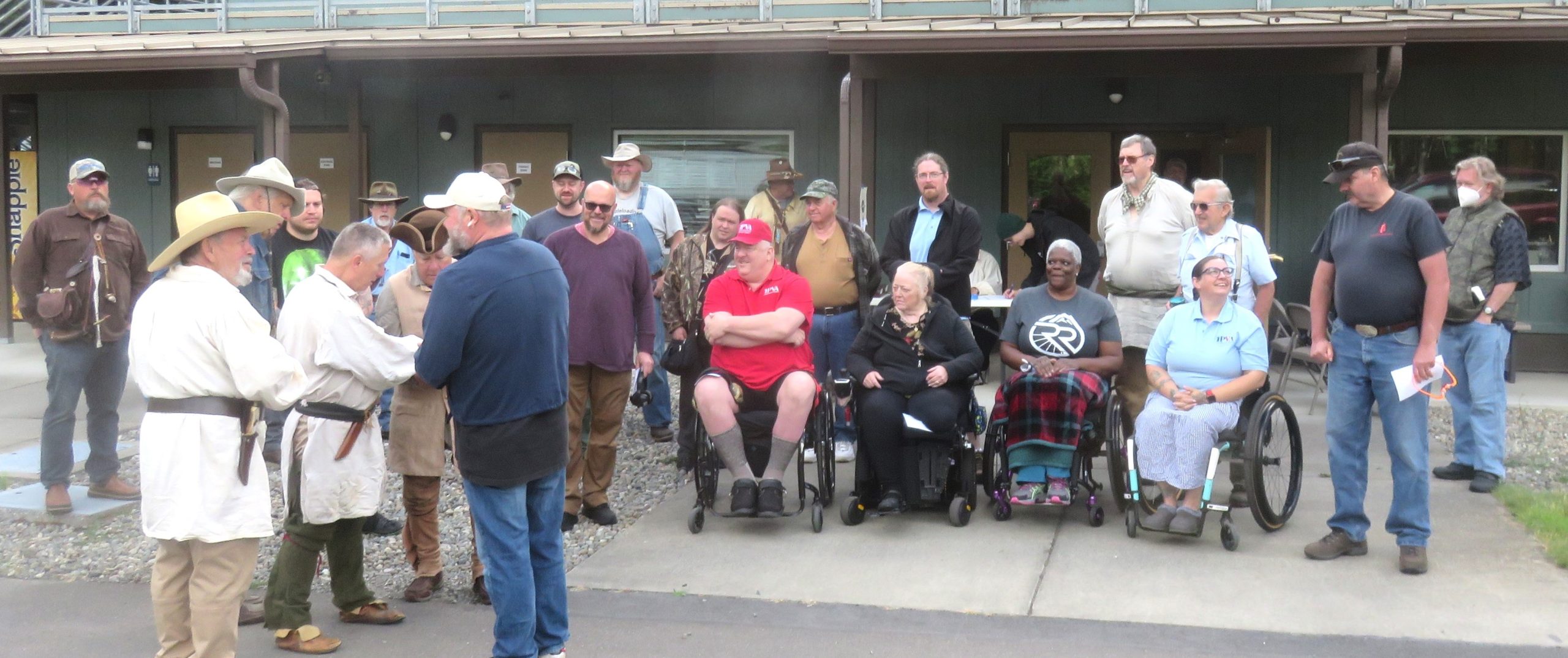
The barbequed lunch was finished about the same time, so all of the shooters and volunteers gathered inside the clubhouse to watch the presentation of awards. The Plainsmen had a table with the prizes arranged for the shooters to pick what they wanted.
Naturally, the first name to be called was Jon Newton’s, the guest with the perfect score. He surveyed the prizes on the table with genuine interest and then made an obvious grab for the “weeping heart” tomahawk that was nearest his hand. I’m quite sure that the next thing on his “want list” will be a practice block for his backyard.
The next shooter to be awarded, for missing only one shot, was Matt with 15 hits. Matt looked over the prizes just briefly and picked a knife in a sheath. I never saw the blade of the knife, but it was big enough to be a Bowie knife.
Following Matt was the high scoring lady of the group, Joy Cochran, and she, for some reason, had missed the elk twice, giving her 14 hits. Joy didn’t pause very long at the prize table and she picked a flattened powder horn. Now we can wonder if she’s going to get a pouch to go with that as well as a good muzzleloading rifle. She obviously knew how to shoot and being introduced to the fun of shooting muzzleloaders, we can guess, has made a lasting impression.
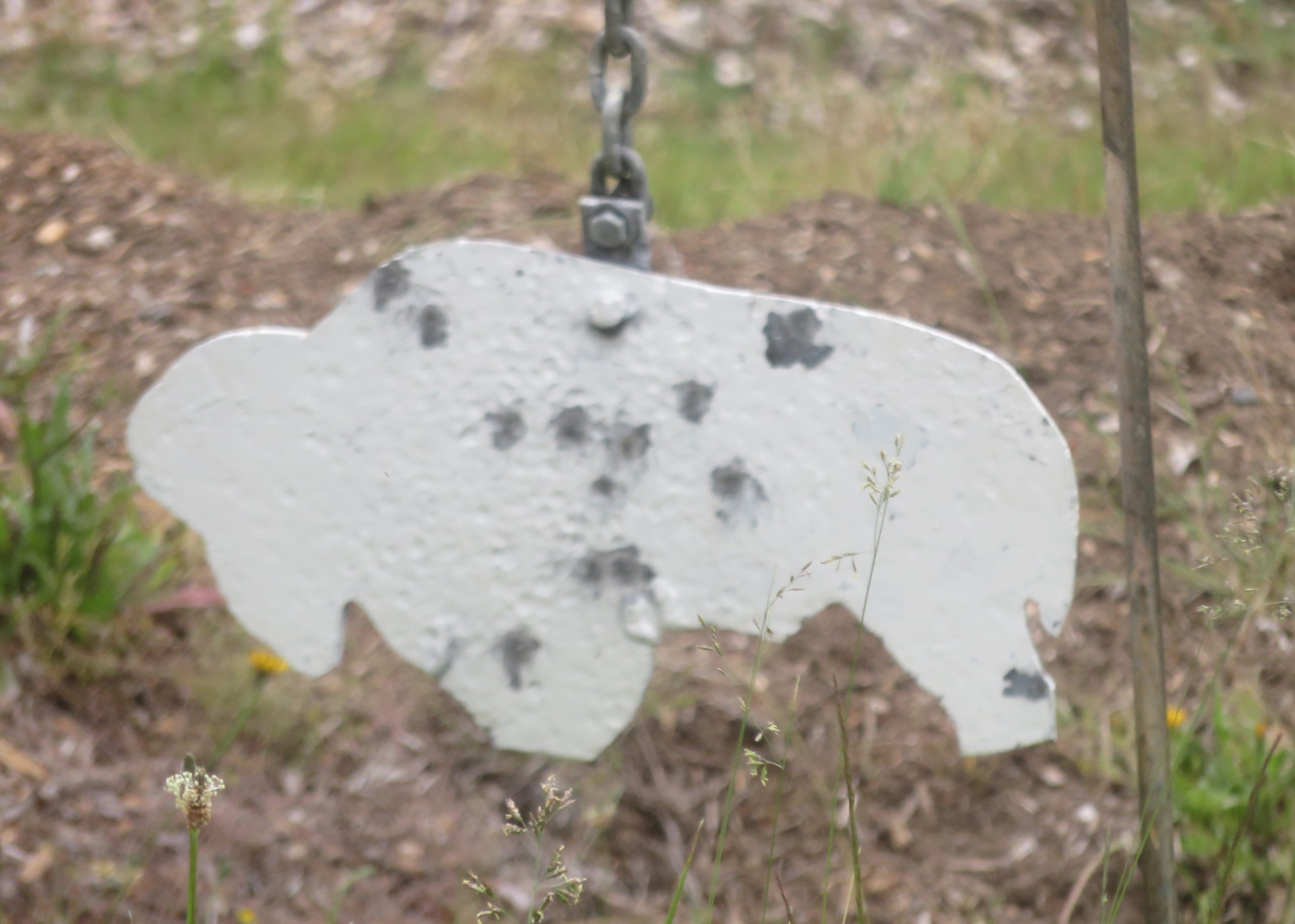
Those top three shooters were followed by the remaining shooters in order of their scores. The prize table still had some goods left on it, which were put away to be brought back out for another event, and every shooter had several items to pick from before making their selections. From what we could see, all of the guests were very pleased with the prizes they had picked.
Then it was all over, as they say, except for the shouting. What was being shouted about was should this match for disabled veterans be done again next year? Everyone replied with an emphatic “Yes!” And some comments were made about how to do it next year. One of the comments suggested making the targets a bit tougher or harder to hit. My personal thoughts on that do not recommend making the targets harder to hit. The fact that some of the shooters turned in very good scores this year is simply to their good credit, but they are not a good representation of the cross-section of the disabled shooters. Making the targets harder to hit might not mean that the good shooters would be making less hits, but it would guarantee that the poorer shooters would not be getting as many hits. Making good hits is certainly encouraging to all shooters, so my vote (which I don’t have with the Paul Bunyan club) would be to keep this match inviting to all by posting gongs or targets that are on the “easy” side.
The only other thing I’ll add about volunteering to help out at this match is that it was actually more fun than doing the shooting. I don’t think I’m alone at all when I say you’ll see me volunteering again for such events. This is a great way to say “thank you” to some of our veterans.



